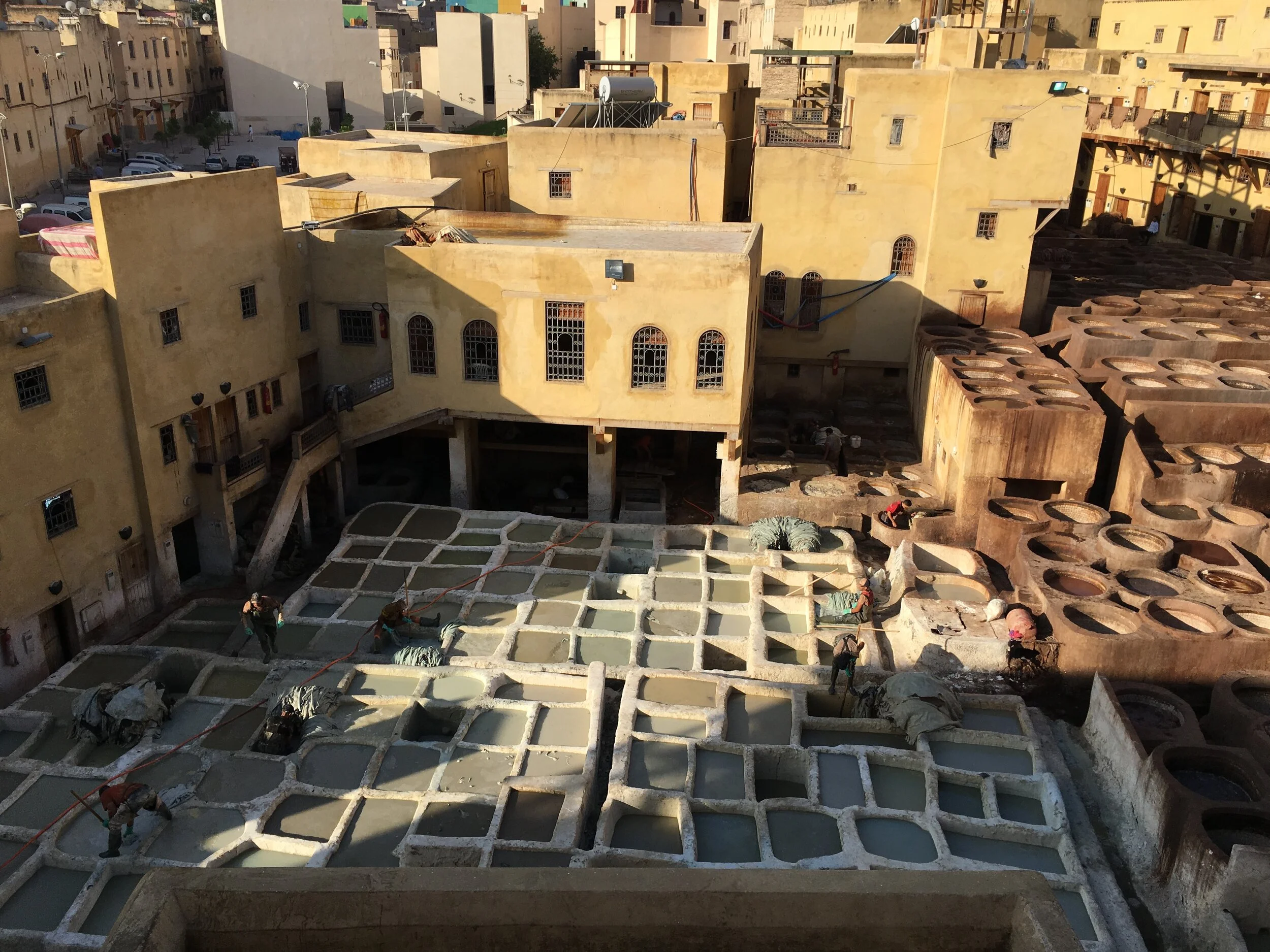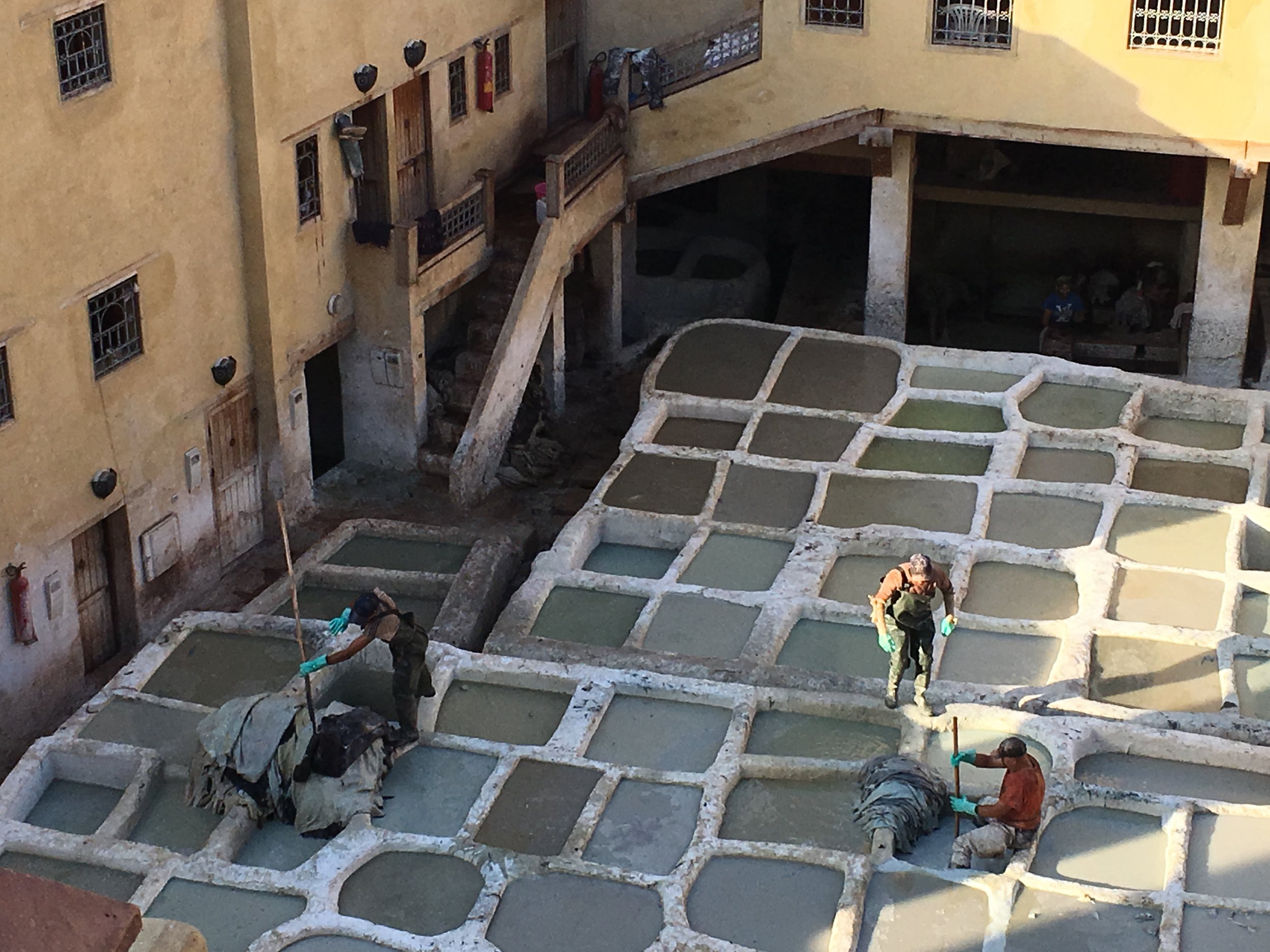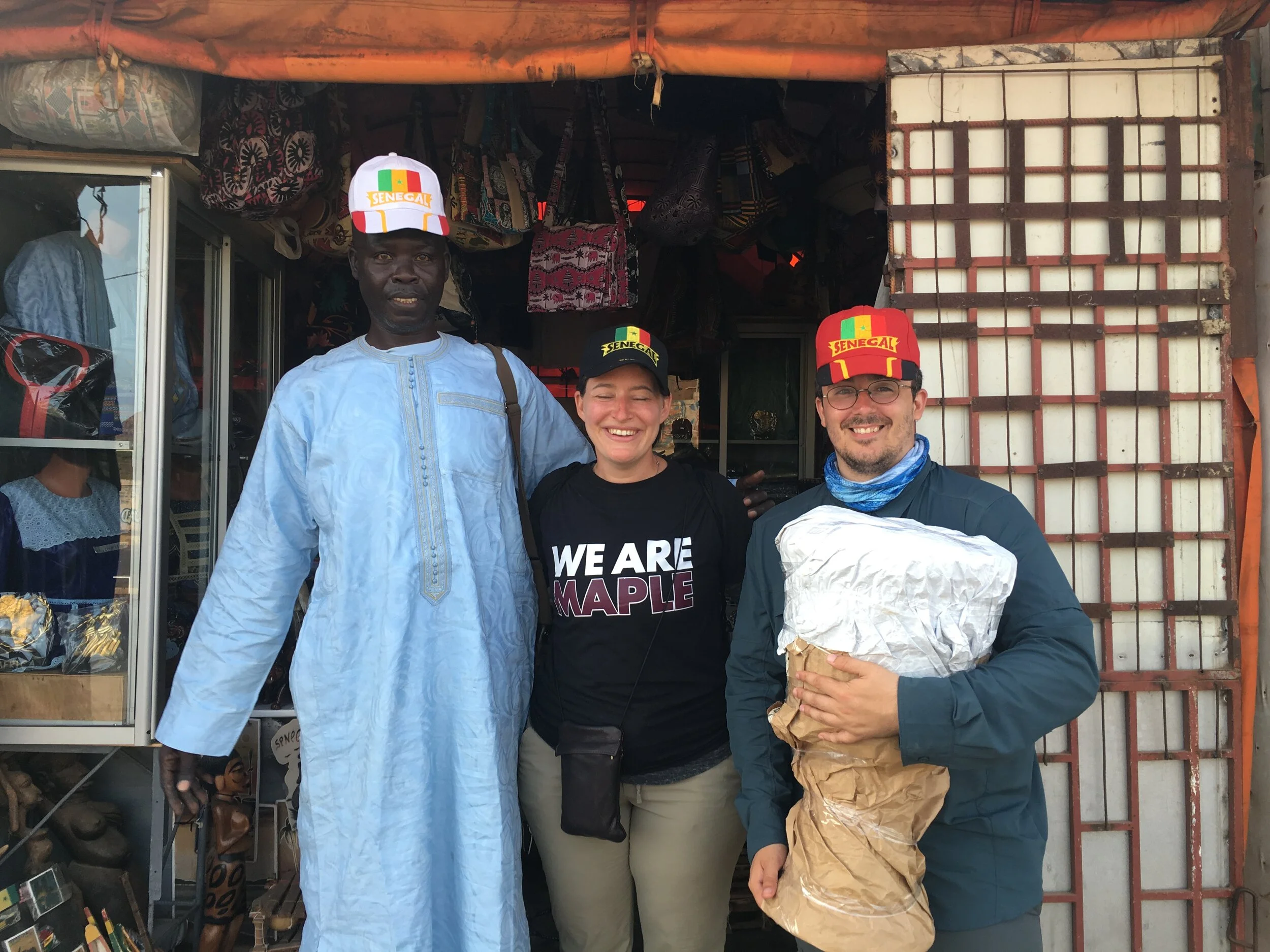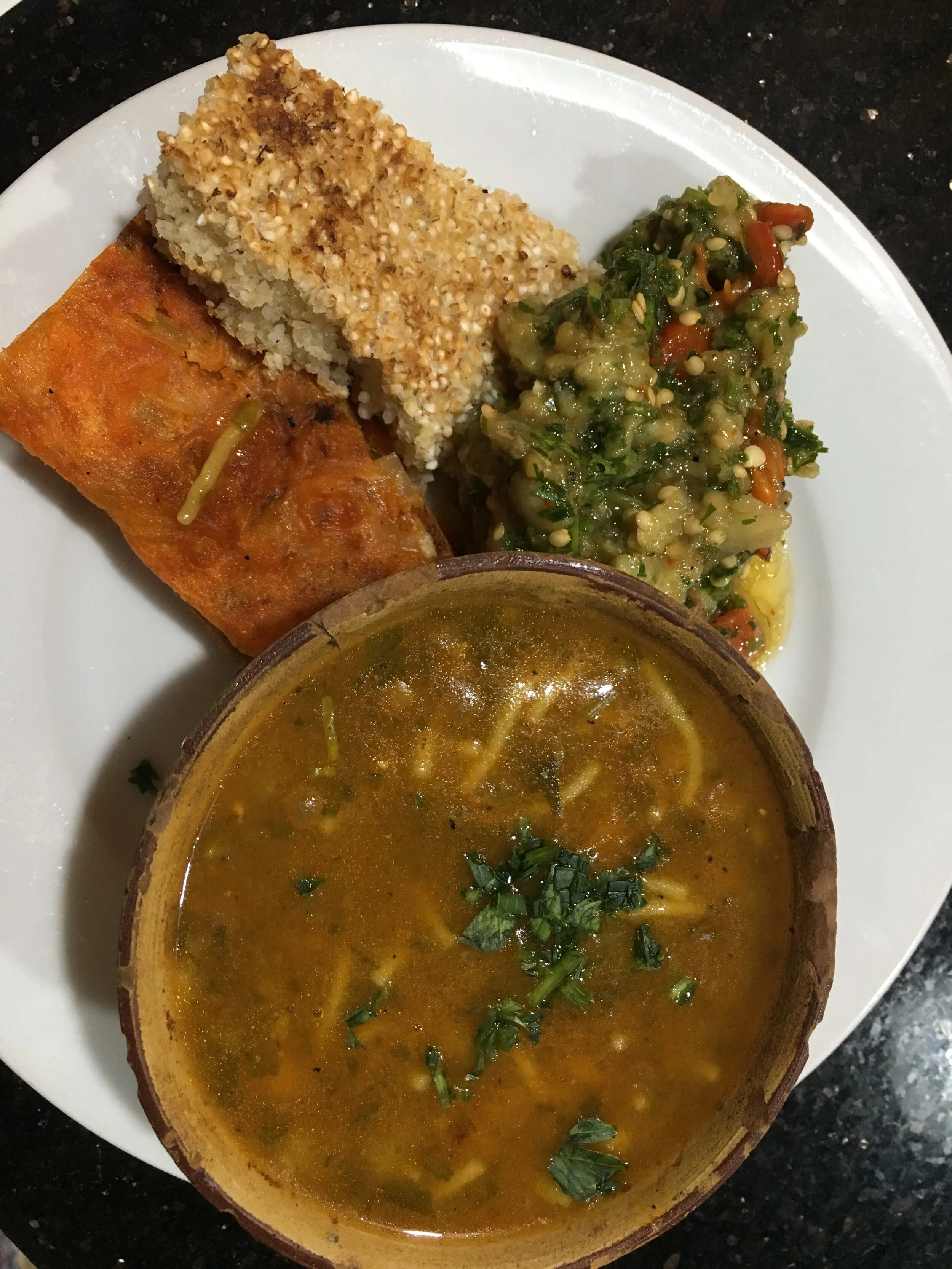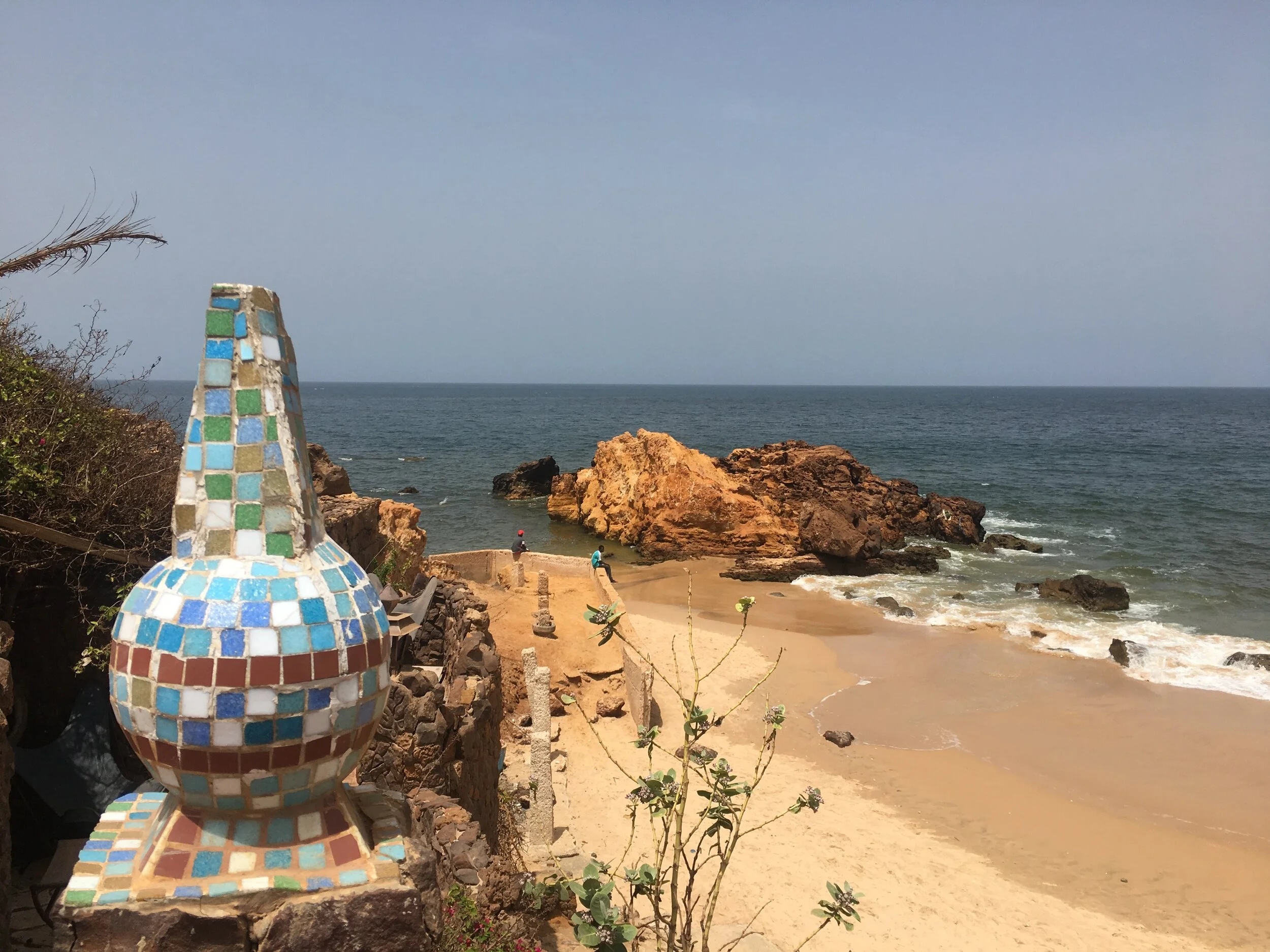The Tanneries of Fes
The Chaouwara Tanneries in Fes have been processing hides from goats, sheep, camels and cows into supple dyed leather for nearly 1000 years. Crafts mades out of the bright yellow, pink, blue and brown leather are made and sold in the souks where stalls While the reputation of the tanneries are that the shop owners are pushy to make a sale, the pits themselves stink and the viewing platforms are crowded, I experienced none of these and had an incredible time watching the workers from above.
This is the door that magically opened when we walked up to it (I have the suspicion someone inside heard us talking in the alley.) A man opened the door and told us to wait a minute. Another man re-opened the door a few minutes later and took us up to the 4th floor rooftop to observe the tannery below.
We had read that the early morning was the best time to go to beat the crowds so we set out at 7 a.m. and arrived around a half hour later to find all the shops closed and not another soul in sight. Moroccan culture is late to bed and late to rise. You’d be hard pressed to find a cup of coffee before 9 a.m. but I was shocked that none of the doors on Rue Chouara were open, especially since the touts we talked to the night before said the workers start the day at 5:30 a.m.
The Chaouwara tanneries are the oldest in Africa having been built in medieval times and refurbished in 2016. The process remains unchanged and many of the workers are from the same family who orally pass down the technique through the generations.
There are touts all over the Medina. These young men sit around with their friends or pace the streets looking for tourists to chat up and guide. “Hello, madam, that way is closed, turn this way, madam,” is a favorite line to draw foreigners toward their friends’ or family’s shops. They’ll try 2 or 3 different languages until they find one that sticks. I been greeted with “Bienvenidos” more than once. They will guide you to the mosque, to the tanneries or to the museum seemingly acting like a good Samaritan then expect a tip or walk away in a huff when you don’t respond or tell them you’re not interested in their services.
Rawhide from cattle, goats, and camels are brought to the tannery via car or pack mule to begin the process of softening and dying before they’re made into leather goods.
We wandered down a few of the tight pedestrian alleys that make up the maze of the Fes medina. We passed a garbage collector who scooped up the piles people leave by the stoop and placed it into the pack on his donky’s back. We found closed door after closed door and a tout who told us to come back at 10. We eventually found ourselves at No. 70 around the back side of the tannery. Magically the door opened and we were lead up a winding staircase to the viewing platform at the top.
Hand stitched “poofs” are leather pillow covers of dyed and embossed leather are used to sit on at low tables in many Moroccan restaurants and tea houses. Megan bought one she’ll stuff with cotton batting at home then put in her classroom’s reading nook.
I’ve never been much of a fan of leather but seeing how challenging the work is I have a new appreciation for the material. Men used huge hooks to scoop heavy soaked hides from the bath that softened the skin and loosened the hair. Other men used big brushes to clean the soaked hides and remove the fur. In the brown stone pits, cleaned white skins were thrown into colored vats of dye made with indego, henna, and poppy. They then jumped into the vat stepping on the hides and swirling the mixture with their feet.
The Chaouwara tanneries use natural dyes. Yellow color comes from Saffron, which is the most expensive and it applied to the hides by hand rather than soaking the hides in vats. Here two men dye goatskins with saffron dye.
The tanneries produce a lot of leather, a lot of pollutants and include less than desirable working conditions for the men who are exposed to ammonia and lime as well as chilly winter temperatures (5ºC/40ºF) while wearing flip flops and being half submerged in the vats. The days are long and the smell (while not as bad as I imagined and not as bad as I’m told it used to be) isn’t great.
Once the hides enter the tannery, it will be soaked for a few days in white stone baths. The liquid is a mixture of water, cow urine, salt, pigeon droppings, and quicklime used to soften the hides.
Because we arrived so early in the morning, we didn’t have to share our viewing gallery with anyone. There were three aggressive dogs on adjoining balcony next door. Our French-speaking guide asked us if we wanted to get a better view from the dog balcony (minus the dogs.) We agreed and he warned us that it wasn’t cleaned up yet. We said that didn’t matter. What we didn’t quite catch is that it was piles of dog excrement that wasn’t cleaned up as the dogs run around on the terrace at night. Fez’ homes don’t have back yards and parks inside the medina are non-existent. We watched our step and laughed that the dog poop smelled worse than the tannery pits and took our photos and watched the poor mules carrying loads of skins back and forth.
The Fez River, which runs along the eastern side of the tannery was for many decades polluted with chemicals from the tanneries and craft workshops. Moroccan architect and engineer Aziza Chaouni wrote her Harvard thesis on the revitalization of the river and improvements are slowly but surely taking place.
Our guide ended up just being the door guy. While he took us into the three floors of shops, he said he couldn’t actually sell us anything because he didn’t know the prices and that the shop keeper wouldn’t arrive until 10 a.m. This worked out wonderfully for us as we felt absolutely no pressure to buy anything and could look to our hearts content. We tipped him 15 dirham for unlocking the door for us and sharing his knowledge about the tanning process before heading back to our hotel for breakfast.
Dozens of shops sell handcrafted leather goods and each of the viewing balconies over the tanneries has its own boutique filled with purses, coats, shoes, wallets, and cushions.
